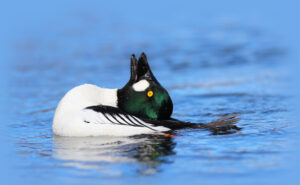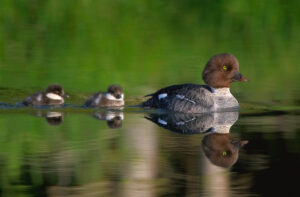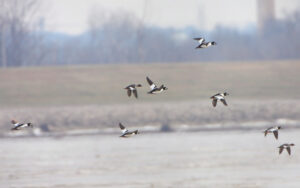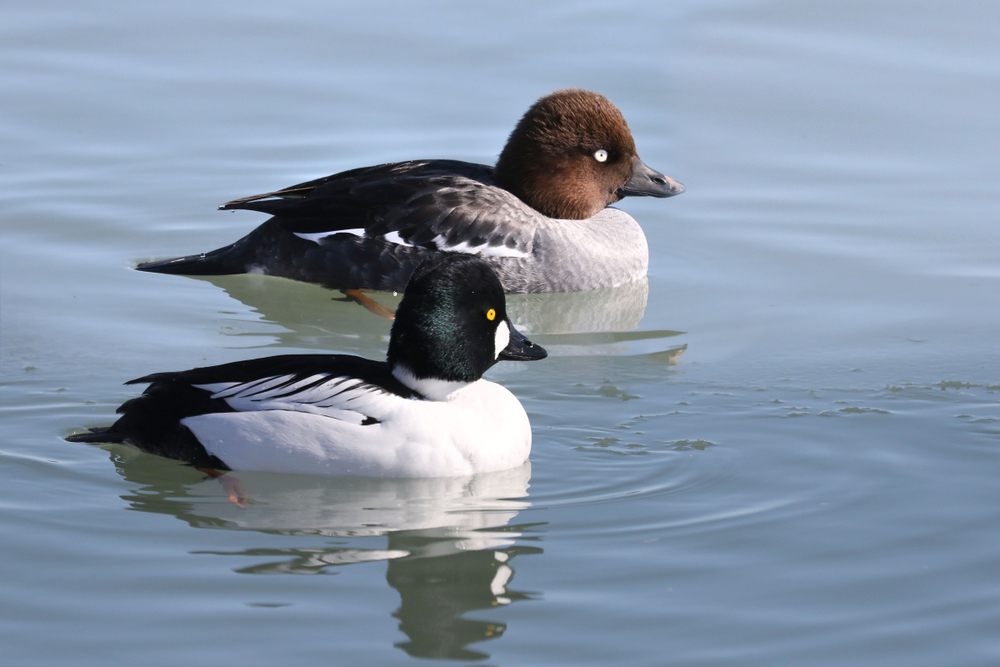Common Goldeneye, Bucephala clangula
Bill Rowe
Common Goldeneyes are handsome ducks that spend their summer nesting in hollow trees by remote lakes in the midst of the boreal forest, i.e., in Canada and Alaska, or, on the other side of the pond(s), in Scandinavia and Russia. With the advent of fall, they come down to the middle latitudes—the United States, central Europe, China, Korea, Japan— and visit with us. They are one of the most familiar winter ducks here in the Midwest, and can be especially numerous when our weather gets really cold and icy. At such times, a large lake or a stretch of the Mississippi could easily host a thousand goldeneye, diving and displaying and acting as if it were summer vacation. “Diving” because they are among the ducks that swim under water to feed, rather than just tipping up like Mallards; they are hunting small invertebrates and fish and plant life, and in the process you’ll see them disappear and then pop back up a minute later, some distance away. And “displaying” because, even in December and January, the males are courting the females with a whole series of maneuvers worthy of the Olympics, including the “head-throw” (see below left). As the ice melts, the goldeneye begin to drift northward again, with few left by April. Their populations seem reasonably stable, which makes sense given the remoteness of their breeding grounds; the exceptions are probably along the southern margins of their range, as in the northernmost United States (Maine, Minnesota), where ongoing lakeside development probably reduces their numbers. Some goldeneye are taken during the fall hunting season, but, at least here in the U.S, this is well managed.
IDENTIFICATION: The male is easy to spot even at a distance by his all-white breast and sides, black head with green iridescence, and a large oval white spot between the eye and the bill. His shape is unique, too, with a large, puffy, peaked head. The female is the same shape but entirely different in color: she has a gray body and a chocolate head, separated by a slight white collar. In flight, both of them show large white patches on the inner wing, and the wings make a loud whistling sound. Their eyes, of course, are golden. The only real identification issue is with a close cousin, Barrow’s Goldeneye, which is very rare in Missouri; see your field guide.
ST. LOUIS STATUS: Our timetable and habitat for goldeneye are as stated in the main account, above. Good locations are Riverlands, Winfield Dam, Horseshoe Lake, and Carlyle Lake.
Learn more and listen to the calls and wing whistle of Common Goldeneyes here.


Male courtship with head-throw
Female with young

Goldeneye in flight
Photo Credit: Al Smith




